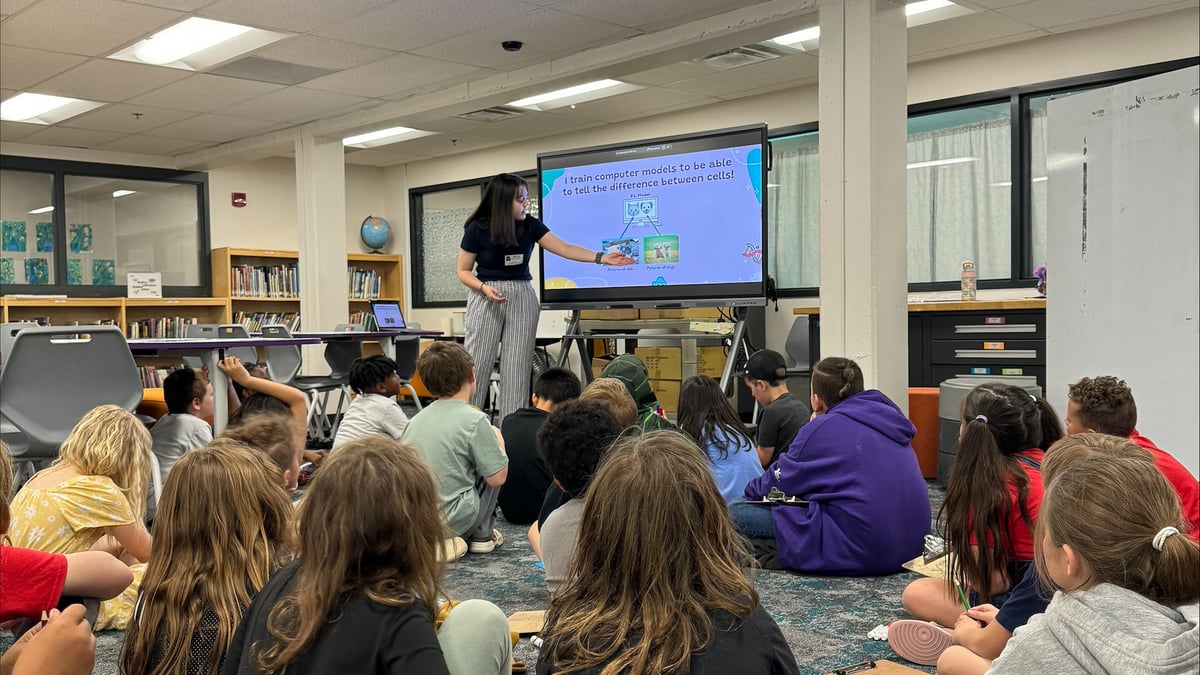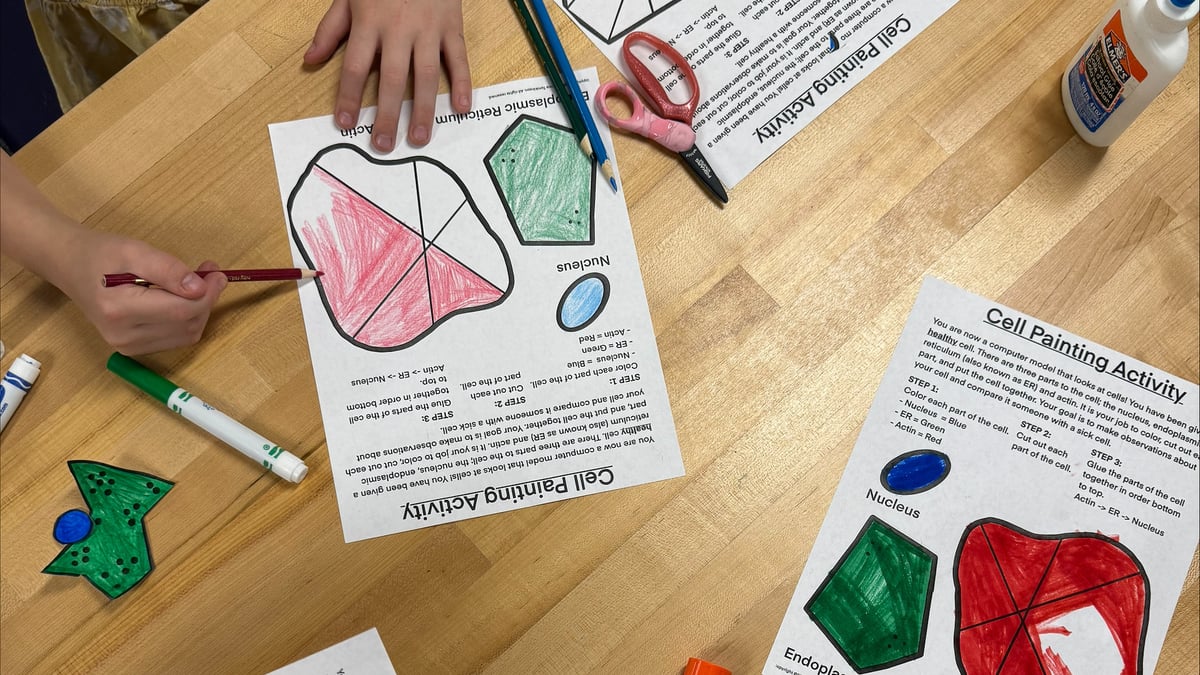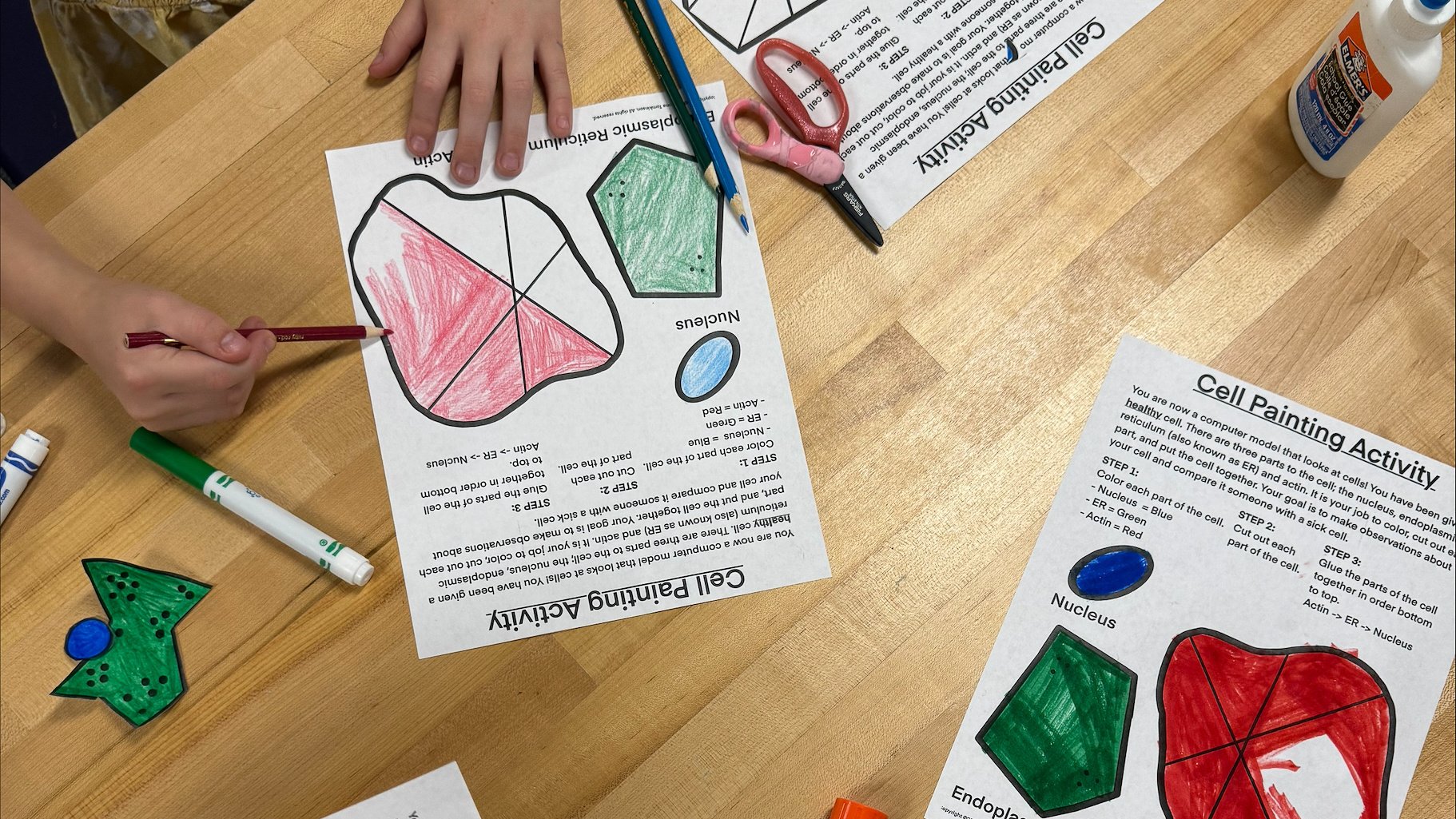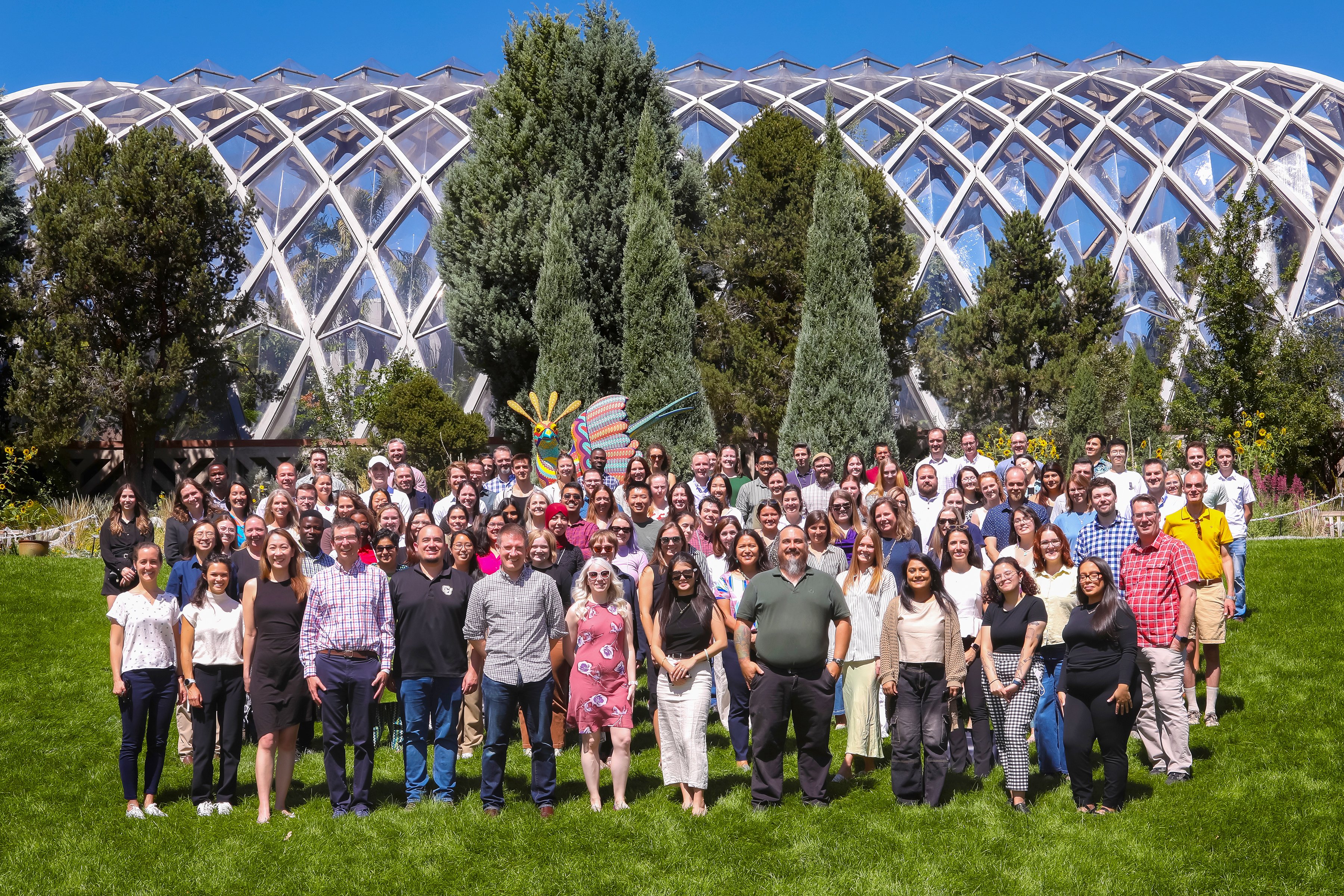Celebrated annually on Nov. 8, National STEM Day highlights the important role of science, technology, engineering, and mathematics in education.
Polton Elementary School in the Cherry Creek School District hosts a STEM Day every year that aims to help students explore STEM fields through activities, presentations, and guest lectures. This year, Jenna Tomkinson, a quantitative cell biologist in the Way Lab at the Department of Biomedical Informatics at the University of Colorado School of Medicine, visited the school to discuss her career, introduce students to cell painting, and engage them in a fun, STEM-related activity.





Tomkinson describes her role in the Way Lab as a "chaperone for the data," meaning she analyzes images from cell painting to differentiate between cells based on various characteristics. She designed an interactive coloring exercise to introduce Polton Elementary students to cell painting. The students were asked to color two cells, one healthy and one sick. Next, they used their critical thinking and observational skills to identify each cell. This exercise helped the students understand cell biology and how their own skills are similar to machine learning.
We sat down with Tomkinson to discuss cell painting, her experience at Polton Elementary, and why she thinks STEM is an integral part of the curriculum.

What is cell painting?
Cell painting is a fluorescence microscopy staining assay where we capture images of a cell and then segment the various parts. We can segment the nuclei or even the whole cell, and then we can use those segmentations and extract single-cell features. This tells us if this single cell has a specific feature like high intensity in the mitochondria.
How did you teach the students about cell painting?
I wanted to teach them how to identify if a cell is good or bad, similar to a machine learning model. I designed a cell painting activity where the students colored and put together their own cells. There were two versions of the cells, one "healthy" and one "sick." Like a machine learning model, the students had to use critical thinking and observation skills to determine what made these cells different.
How did you explain machine learning to the students?
I started by asking the students to identify the differences between cats and dogs. The students already knew what cats and dogs looked like, so it was easy for the to find the differences. I explained that a computer does the same. After we applied the same technique to the cells that the students colored. I was surprised that the students could identify between the two quickly. They even asked further questions about cells and our ability as scientists to cure things like asthma.
How can we support students who want to explore STEM?
I am unaware of a community at CU Anschutz where you can easily register to visit a local school to share your expertise. It would be great to have a pipeline of people who can come and present some sort of science topic, perform an experiment, or just share more information about their careers. It would be nice to have that as something accessible that connects the schools with professionals.
Why do you think STEM is important?
STEM is important for any student's education because it helps to have a basic understanding of the things happening around you. Knowing just one thing in STEM can expand your worldview and help you explore your critical thinking skills.



